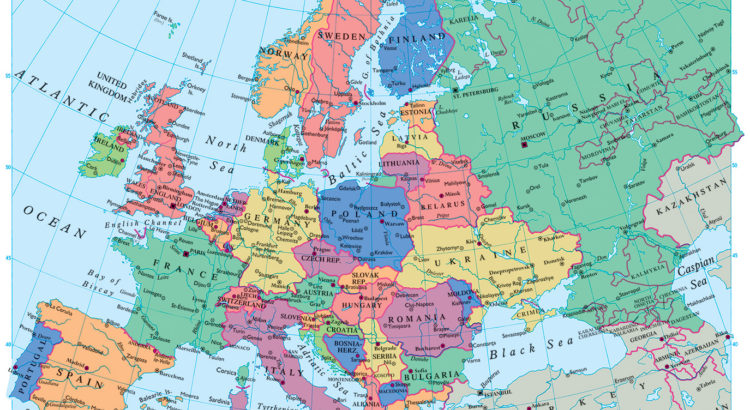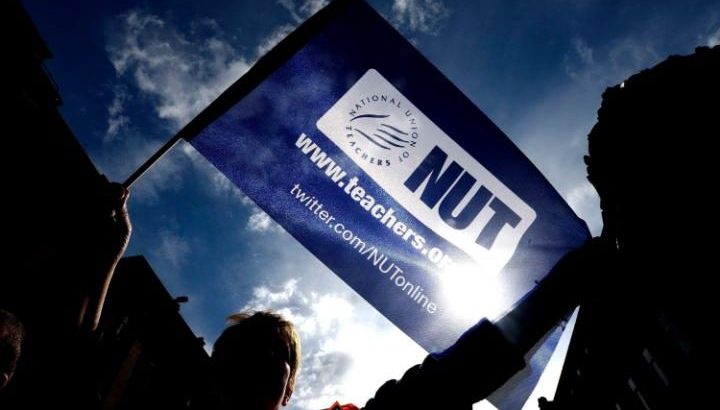voxeu.org/08 de julio de 2016/Por: Paul Hünermund, Georg Licht
Resumen: Los países europeos están coordinando cada vez más sus políticas nacionales de investigación y desarrollo. Sin embargo, los programas supranacionales I + D conllevan problemas desde un punto de vista de la gobernabilidad. En esta columna se discute el problema de las subvenciones cruzadas entre los países participantes. iniciativas de programación conjunta europeos generalmente están diseñados para evitar la transferencia de pagos internacionales. La evidencia empírica sugiere que ello viene a costa de una menor eficiencia. Sin embargo, el 87% del gasto público en investigación y desarrollo (I + D) en 2014 todavía se mantuvo en el level.1 nacional Este paisaje fragmentado de la I interno y los sistemas de apoyo D complica la orientación internacional de ciencia y conduce a una duplicación de los esfuerzos de investigación dentro de la UE. El aumento del número de iniciativas de programación conjunta, por tanto, es una prioridad política clave para la Comisión Europea (OCDE 2012). La puesta en común de las contribuciones nacionales a un programa europeo con un presupuesto común (el llamado «real bote común ‘) plantea problemas desde el punto de vista de gobierno. En particular, las tasas de éxito podrían ser geográficamente desequilibrada si subvenciones concedidas a determinados países no corresponden a la cuota de contribución del país. Este debate sobre las transferencias netas entre los participantes se conoce como justa compensación en los círculos políticos. Además, las autoridades podrían estar tentados a reducir la financiación nacional y libre de paseo en las contribuciones de los países socios. Con el tiempo, crear y distribuir un presupuesto único a nivel supranacional podría requerir cambios en las condiciones marco legales para los países participantes de la OCDE (2012). Para evitar estos problemas, el 80% de las iniciativas de programación conjunta europeos están organizadas como ‘ollas comunes virtuales «(VCP) (Moretti y Villanova 2012). Un VCP emula un verdadero fondo común (RCP) en la medida en la calidad de los proyectos que soliciten subvenciones se evalúa de forma centralizada por una sola autoridad pública, que es responsable de todos los países participantes. Cada país se compromete a respetar el ranking de evaluación de la agencia central, pero sólo paga los fondos a sus propios candidatos nacionales. En consecuencia, la preocupación por el parasitismo y justo retorno se mitigan y hay menos necesidad de armonizar los marcos legales. Sin embargo, un VCP hace que el proceso de asignación de las subvenciones de I + D más complicado. Las propuestas de proyectos son generalmente presentadas por consorcios internacionales como las iniciativas de programación conjunta destinadas a promover la cooperación entre países de I + D. Por lo tanto, las limitaciones presupuestarias tienen que ser holgura en todos los países involucrados. Para ilustrar el funcionamiento de un VCP, supongamos que hay cuatro países que participan en un programa conjunto – A, B, C y D. Cada país aporta un presupuesto para financiar exactamente dos subvenciones. En consecuencia, hay un presupuesto total de exactamente ocho becas. Además, supongamos que hay propuestas de proyectos por seis consorcios internacionales y cada socio del proyecto requiere de una subvención para llevar a cabo el proyecto. Todas las propuestas de proyectos se evalúan según un ranking de calidad central, que puede ser como sigue:
Tabla 1 . El funcionamiento de un fondo común virtual de

Un consorcio formado por dos socios del país B y uno del país A ha presentado su propuesta mejor evaluada. Otro consorcio de países B y C presenta el segundo mejor proyecto, y así sucesivamente. En un fondo común, se concederían las tres aplicaciones de más alto rango, después de lo cual se agotaría el presupuesto común de ocho. En una olla común virtual, por el contrario, las limitaciones presupuestarias nacionales individuales deben ser respetados. La primera propuesta recibe fondos como antes. Entonces, sin embargo, el país B utiliza su presupuesto de dos y el segundo clasificado proyecto renuncia a la financiación. Para la tercera propuesta, los solicitantes de diferentes países, allí de nuevo están disponibles los recursos suficientes. También el quinto clasificado propuesta reúne los requisitos para la financiación en un VCP en este ejemplo.
La Tabla 1 ilustra tres cosas. En primer lugar, en un fondo común, ningún socio de un país D recibe una subvención. En su lugar, todo el presupuesto D’s se paga a los socios del fondo de otros países. El fondo común virtual se supone que previene precisamente esta situación. En segundo lugar, el PCV deja huecos de proyectos no financiados que de otro modo se otorgan en un PCR.En tercer lugar, y lo más importante, el rango promedio de calidad de los proyectos financiados es inferior en un VCP. Por lo tanto, si el impacto de las subvenciones se incrementa con la calidad del proyecto, se financian proyectos menos eficientes. Esto lleva a un compromiso entre el equilibrio geográfico de un VCP está diseñado para inducir y una asignación eficiente del presupuesto del programa.
En un artículo reciente, Hünermund y Czarnitzki (2016) estimar el efecto de Eurostars, un programa conjunto de 33 países (incluidos los cinco países no pertenecientes a la UE) destinados a I + D rendimiento de las pequeñas y medianas empresas, en el crecimiento firme y la creación de empleo. El programa contó con un presupuesto total de 472 millones € entre 2008 y 2013, de los cuales el 25% fue co-financiado por la Comisión Europea (Makarow et al. 2014). Una ventaja práctica del hecho de que no todos los proyectos de alto rango quedan formalizadas en VCP es que facilita la identificación de los efectos causales. Mientras que los mejores proyectos siempre son financiados en un PCR, un VCP permite a los investigadores comparar las empresas financiadas con sus vecinos directos en el ranking de evaluación. Para ponerlo en términos econométricos, la variación exógena en la disponibilidad presupuestaria, generada por el PCV, sirve como un instrumento para la recepción de subvenciones de las empresas. Hünermund y Czarnitzki utilizan este y muestran que el impacto de las subvenciones de I + D en la creación de empleo es de hecho una función creciente de la calidad del proyecto (véase la Figura 1). Puesto que un VCP financia proyectos con una calidad media más baja es la relación estimada se traduce en un trabajo subvención inducida que es un 27% más costoso en comparación con un PCR.
Figura 1 . El crecimiento del empleo inducida por las subvenciones de I + D en el programa Eurostars dependiendo de la calidad del proyecto

Aunque un VCP tiene ventajas desde la perspectiva del gobierno, la evidencia empírica muestra que reduce la eficiencia de las políticas conjuntas de I + D. Los números exactos serán diferentes para otros programas, en función de la relación entre la calidad del proyecto y el impacto de políticas. Sin embargo, siempre habrá una pérdida de eficiencia siempre y cuando la relación no es completamente plana. Por consiguiente, un mejor equilibrio entre el equilibrio geográfico y la eficiencia podría ser una combinación de un PCR y un VCP. En un modo mixto de este tipo una parte del presupuesto total se utiliza para financiar los proyectos mejor clasificados, con independencia de su origen geográfico. La parte restante todavía puede ser asignado como VCP para lograr una tasa de concesión uniformemente distribuida. Hünermund y Czarnitzki simular un modo mixto para el programa Eurostars y ha constatado que la contribución de la Comisión Europea del 25% había sido asignado como un verdadero fondo común, una gran parte de los costes adicionales debido a la VCP se habría evitado.
Noticia Original:
The pooling of national contributions to a European programme with a common budget (a so-called ‘real common pot’) poses problems from a governance standpoint. In particular, success rates might be geographically unbalanced if grants paid out to certain countries do not correspond to the country’s contributing share. This debate about net transfers between participants is known as ‘juste retour’ in policy circles. In addition, policymakers might be enticed to lower national funding and to free-ride on partner country’s contributions. Eventually, creating and distributing a single budget at the supra-national level might require changes in the legal framework conditions for participating countries (OECD 2012).
The virtual common pot
To avoid these problems, 80% of European joint programming initiatives are organised as ‘virtual common pots’ (VCPs) (Moretti and Villanova 2012). A VCP emulates a real common pot (RCP) insofar as the quality of projects applying for grants is evaluated centrally by a single public authority, which is responsible for all participating countries. Each country is committed to respect the evaluation ranking of the central agency, but only pays funds to their own national applicants. Consequently, concerns about free-riding and juste retour are mitigated and there is less need to harmonise legal frameworks. However, a VCP makes the allocation process of R&D grants more complicated. Project proposals are usually submitted by international consortia as joint programming initiatives aimed at promoting cross-national R&D cooperation. Thus, budget constraints need to be slack in all countries involved.
To illustrate the working of a VCP, suppose there are four countries participating in a joint programme – A, B, C, and D. Each country contributes a budget to fund exactly two grants. Consequently, there is a total budget of exactly eight grants. Further, suppose that there are project proposals by six international consortia and each project partner requires one grant to conduct the project. All project proposals get evaluated according to a central quality ranking, which may look as follows:
Table 1. The working of a virtual common pot

A consortium formed by two partners from country B and one from country A submitted the best evaluated proposal. Another consortium from countries B and C presented the second-best project, and so forth. In a real common pot, the three highest-ranked applications would be granted, after which the common budget of eight would be exhausted. In a virtual common pot, by contrast, the individual national budget constraints need to be respected. The first proposal receives funding as before. Then, however, country B used up its budget of two and the second-ranked project forgoes funding. For the third proposal, by applicants from different countries, there are again sufficient resources available. Also the fifth-ranked proposal qualifies for funding in a VCP in this example.
Table 1 illustrates three things. First, in a real common pot, no partner from country D receives a grant. Instead, D’s entire budget is paid out to fund partners from other countries. The virtual common pot is supposed to prevent exactly this situation. Second, the VCP leaves gaps of non-funded projects that otherwise would be granted in an RCP. Third, and most importantly, the average quality rank of funded projects is lower in a VCP. Thus, if the impact of grants increases with project quality, less efficient projects are funded. This leads to a trade-off between the geographical balance a VCP is designed to induce and an efficient allocation of the programme’s budget.
The Eurostars Joint Programme
In a recent paper, Hünermund and Czarnitzki (2016) estimate the effect of Eurostars, a joint programme of 33 countries (including five non-EU countries) targeted at R&D-performing small and medium-sized enterprises, on firm growth and job creation. The programme had a total budget of €472 million between 2008 and 2013, of which 25% was co-funded by the European Commission (Makarow et al. 2014).
A practical advantage of the fact that not all high-ranked projects get granted in a VCP is that it facilitates the identification of causal effects. Whereas the best projects always get funded in an RCP, a VCP allows researchers to compare funded firms with their direct neighbours in the evaluation ranking. To put it in econometric terms, the exogenous variation in budget availability, generated by the VCP, serves as an instrument for firms’ subsidy receipt. Hünermund and Czarnitzki use this and show that the impact of R&D grants on job creation is indeed an increasing function of project quality (see Figure 1). Since a VCP funds projects with a lower average quality the estimated relationship translates into one grant-induced job that is 27% more costly compared to an RCP.
Figure 1. Job growth induced by R&D grants in the Eurostars programme depending on project quality

Although a VCP has advantages from a governance perspective, empirical evidence shows that it reduces the efficiency of joint R&D policies. Exact numbers will differ for other programmes, depending on the link between project quality and policy impact. However, there will always be an efficiency loss as long as the relationship is not completely flat. A better trade-off between geographical balance and efficiency might therefore be a combination of an RCP and a VCP. In such a mixed mode a share of the total budget is used to fund the best-ranked projects, irrespective of their geographical origin. The remaining share can still be allocated as a VCP to achieve an evenly distributed granting rate. Hünermund and Czarnitzki simulate a mixed mode for the Eurostars programme and find that if the European Commission’s contribution of 25% had been allocated as a real common pot, a large fraction of the additional costs due to the VCP would have been avoided.
References
European Commission (2008), “Towards joint programming in research: Working together to tackle common challenges more effectively”, Communication from the Commission to the European Parliament, the Council, the European Economic and Social Committee and the Committee of the Regions, 11935/08, COM (2008) 468
Hünermund, P, and D Czarnitzki (2016), “Estimating the Local Average Treatment Effect of R&D Subsidies in a Pan-European Program”, ZEW Discussion Paper No. 16-039
Makarow, M, G Licht, I Caetano, D Czarnitzki, and S Elçi (2014), “Final Evaluation of the Eurostars Joint Programme”, Ref. Ares (2014) 3906990
Moretti, P F, and L M Villanova (2012), “Coordinating European national research programmes: the process towards Joint Programming Initiatives”, Consiglio Nazionale delle Ricerche, DTA 10-2012
OECD (2012), “Meeting Global Challenges through Better Governance: International Co-operation in Science, Technology and Innovation”, OECD Publishing
Tomado de: http://voxeu.org/article/joint-programming-european-science-and-technology-policy
Imagen: https://www.google.com/search?q=Joint+programming+in+European+science+and+technology+policy&espv=2&biw=1366&bih=667&site=webhp&source=lnms&tbm=isch&sa=X&ved=0ahUKEwjb28nP_-PNAhXDez4KHdbUAJMQ_AUIBygC#tbm=isch&q=european+continent&imgrc=YNC7jRaz20gXpM%3A














 Users Today : 33
Users Today : 33 Total Users : 35460296
Total Users : 35460296 Views Today : 44
Views Today : 44 Total views : 3419012
Total views : 3419012